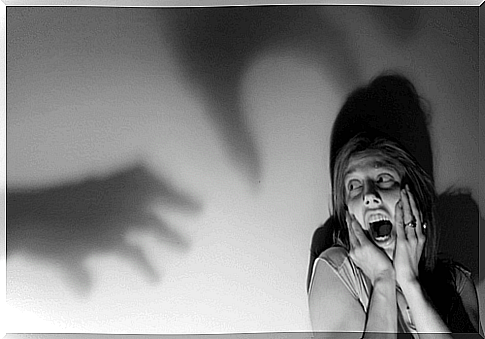Say Goodbye To Your Anxiety With Mindfulness

Human beings have the ability to experience a different type of fear than that of animals, psychological fear. Its great peculiarity is that it has nothing to do with any real, objective or immediate danger. Mindfulness can help us overcome that psychological fear that I am talking about.
The organism of the person who suffers it is in the “here and now”. However, your mind is in the future anticipating possible realities or new repetitions of past realities.

Mindfulness and the disease of thinking
Thinking sickness is about an uncoordinated state of mind and body. Thoughts go on one side, emotions on the other, and physical sensations in a third direction. With mindfulness we will try to coordinate these elements in perfect harmony.
Quite simply, not only are we not in the present, but we live in fragmentation. Our perception of reality is divided, dispersed, and distortion necessarily appears. Then the attentional and interpretive biases appear and finally the anxious pathology.
The anxious person’s mind has a life of its own, a life separate from the body and objective reality. The anxious mind lives to avoid future danger. This is so to the point that the body ends up suffering from different anxiety disorders.
Anxiety as experiential avoidance in mindfulness
The particular way of behaving used by people with anxiety is called (in mindfulness terms) “experiential avoidance.” Experiential avoidance occurs when a person does not want to remain in contact with certain experiences (bodily sensations, emotions, thoughts, memories …); then, the person alters the frequency and form of these events as well as the contexts that cause them.
Such efforts to avoid such experiences lead directly to the opposite. They lead to exacerbating them until the person feels even more out of control. Thus, people with an experiential avoidance pattern are much more likely to develop more fear.
They will also flee more from an unexpected panic attack than those who are more accepting of their inner experiences. The suppression of thoughts and feelings clearly contributes to the development and maintenance of generalized anxiety disorder, specific phobias, and PTSD.

Clinical application of mindfulness in the treatment of anxiety disorders
The most important characteristics, common to all anxiety disorders, which are directly addressed by mindfulness practice are:
- Behavioral or experiential avoidance (already explained previously).
- Cognitive rigidity (or what is the same, consistently tend to always think in the same way and not consider alternatives).
- Rigid repertoire of responses (always doing the same, getting stuck).
How Mindfulness Can Help Us Reduce the Effects of Anxiety
Healing anxiety with mindfulness is a process that consists of uniting. For this to occur, all separate and isolated or negated parts must be integrated into consciousness. Mindfulness relies on three fundamental objectives for the treatment of anxiety :
- Expand awareness of our experiences. It is about observing our emotional responses with increased clarity. It’s about being more aware of the avoidant external and internal actions we take to control anxiety.
- Cause a radical change in attitude towards life. We will try to change our overly critical and controlling attitude of mind to a loving, compassionate and nonjudgmental attitude. We will accept the contents, whatever the sign they are.
- Improve our quality of life in general. We will emphasize cognitive flexibility and we will fully involve ourselves in our vital present to bring about changes that enrich our lives.

What can we achieve with the continuous practice of mindfulness?
The continuous practice of mindfulness can be visualized as three processes that are progressively unfolding :
- Realize all the inner contents with intense lucidity.
- Expand one’s vision and take perspective and depth of what happens to us and what its causes are.
- Consciously allowing, rather than blocking, the phenomena of thought, emotion, memory, sensation, image, etc.
Allowing, eventually, the natural dissolution of said contents occurs. This cycle of natural dissolution is like that of any living being. The contents appear before our observing consciousness, they develop and die.
From this it follows that the practice of mindfulness helps us see how our thoughts, emotions and sensations change rapidly. We realize that there is no way to maintain and fix the “pleasant” states and definitively discard the “unpleasant” states.
Mindful exposure or stop escaping from what we are afraid of
In mindfulness exposure we use the same principle as “Exposure with Response Prevention” that is used in cognitive behavioral therapy. We approach what we fear and stay there until the anxiety subsides and disappears.
Sustained observation, without judgment, of feelings related to anxiety, without trying to escape or avoid them, can reduce emotional reactivity. In general, emotional distress is experienced as less unpleasant. Also as less threatening in a context of acceptance because it changes its subjective meaning. This can lead to improved tolerance to affects and aversive situations.
Thus, with mindfulness we can deliberately generate an anxious situation and practice being present with it. This increases our ability to cope. We know that anxiety requires resistance to maintain and increase. The challenge is being present with her long enough.









